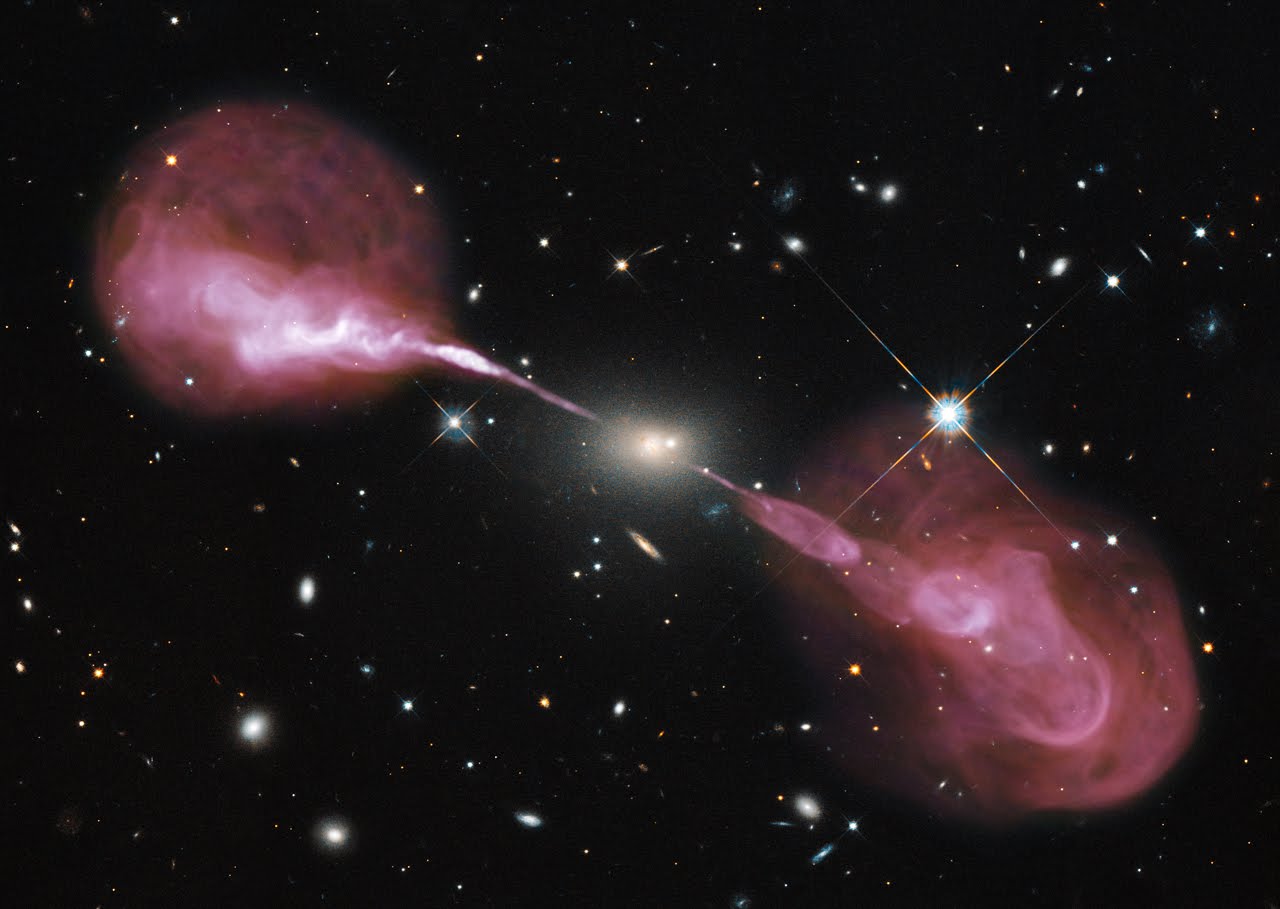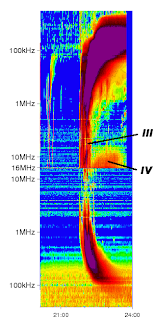Thursday, June 30, 2011
Juno spacecraft preparing for launch in August, on a mission to understand Jupiter a little better
NASA will host a two-day launch Tweetup for 150 of its Twitter followers on Aug. 4-5 at the agency's Kennedy Space Center in Florida. The Tweetup is expected to culminate in the launch of the Jupiter-bound Juno spacecraft aboard an Atlas V rocket.
The launch window opens at 8:39 a.m. PDT (11:39 a.m. EDT) on Aug. 5. The spacecraft is expected to arrive at Jupiter in 2016. The mission will investigate the gas giant's origins, structure, atmosphere and magnetosphere. Juno's color camera will provide close-up images of Jupiter, including the first detailed glimpse of the planet's poles.
http://www.jpl.nasa.gov/news/news.cfm?release=2011-194
http://www.jpl.nasa.gov/news/news.cfm?release=2011-196
http://blogs.jpl.nasa.gov/
http://herrero-radio-astronomy.blogspot.com/2011/04/juno-jovian-observatory-in-titusville.html
http://herrero-radio-astronomy.blogspot.com/2010/11/goddard-space-flight-center-delivers.html
http://herrero-radio-astronomy.blogspot.com/2010/07/juno-armored-up-to-go-to-jupiter.html
http://herrero-radio-astronomy.blogspot.com/2010/04/juno-assembly-started-april-2010.html
Tuesday, June 28, 2011
The complex morphology of type N Jovian decametric radiation
I refer to:
Flagg, Greenman, Reyes, and Carr, 1991, "A Catalog of High Resolution Jovian Decametric Radio Noise Burst Spectra, Volume 1" :
http://adsabs.harvard.edu/abs/1991STIN...9127047F
Section 3.5.2 describes N events.
I quote:
"...An N-event is a narrow band of emission which consists of either quasi continuous activity (narrow-band L-burst) or a train of narrow bandwidth S-bursts. The emission band is typically a few hundred kilohertz wide and often exhibits complex interactions with wide bandwidth S-bursts and other drifting features. N-events often exhibit exceptional frequency stability in the sense that the overall emission envelope may persist in a narrow frequency band for several minutes. Riihima has reported N-events lasting as long as 50 minutes while remaining within a 2 MHz wide frequency band [Riihimaa 1985]. At times, emission within the frequency boundaries of the N-event is very stable (Figure 3.4 A,B) and the upper and lower frequency edges of the emission remain nearly parallel. Sometimes the r Quasi-continuous emission within the N-event undulates rapidly in frequency. Interactions between N-events and wide frequency range S-bursts produce complex burst shapes and structures. While the burst character within an N event can be stable and unchanging over periods of tens of minutes it is also observed to change in character, switching between continuous emission and a narrow bandwidth S-burst train on a time scale of tens of seconds. The four moderate resolution AORS plates (3.21-3.24) show this type of N-event behavior near 30 Mhz..."
See also:
Riijimaa 1985 (Aarne Karjalainen Observatory, Oulu, Finland):
"Bursts of type N in Jupiter's decametric radio spectra"
http://adsabs.harvard.edu/abs/1985EM%26P...32....9R
Oya with 3 co authors 2002:
"Analyses Of Jovian Decametric Radiation S-Bursts Interacting With N-Bursts"
http://adsabs.harvard.edu/abs/2002EM%26P...88..187O
Monday, June 27, 2011
Io-D Jovian arcs on 110624
For a discussion of Io-D events see also my page:
Dynamic spectra of Io-D arcs, from STEREO WAVES daily summaries:
http://herrero.freei.me/Io-D/index.html
Tuesday, June 21, 2011
Multiple non-Io Jovian arcs on 110620
My thanks to the STEREO WAVES Team.
I frequently enjoy studying and quoting from the Jupiter Radio Maps encoded by Junpei Azuma, in Professor Kazumasa Imai's Laboratory at the Kochi National College of Technology, Japan:
http://jupiter.kochi-ct.jp/
My many thanks to them.
Sunday, June 19, 2011
The Expanded Very Large Array, a New Telescope for New Science
Perley with 3 co authors, 2011:
http://arxiv.org/abs/1106.0532 free 6 page pdf
describe the upgraded array.
This is one of several papers that will appear in a forthcoming Astrophysical Journal EVLA special issue.
I worked in the construction of the original VLA in the 1970s, and was Head of the Telescope Operations Division.
NRAO home page
http://www.nrao.edu/
EVLA home page
https://science.nrao.edu/facilities/evla/index
Wikipedia VLA article
http://en.wikipedia.org/wiki/Very_Large_Array
More VLA images at
http://images.nrao.edu/Telescopes/VLA
Wednesday, June 15, 2011
Monday, June 13, 2011
The stunning images and movies of the Swedish one meter solar telescope
The telescope is located in the Canary Islands, Spain, near the African coast, and is operated by the Institute for Solar Physics of the Royal Swedish Academy of Sciences in the Roque de los Muchachos Observatory, Instituto de Astrofísica de Canarias.
http://www.solarphysics.kva.se/
Superb images and movies :
http://www.solarphysics.kva.se/NatureNov2002/images/AR10030_4877_color.gif
http://www.solarphysics.kva.se/NatureNov2002/images/np1_fig1_2columns_color.gif
http://www.solarphysics.kva.se/gallery/movies/2010/cawb_spot_02Jul2010_color.mov
http://www.solarphysics.kva.se/gallery/movies/2008/halpha_10Jun2008_AR998_color.mov
http://www.solarphysics.kva.se/NatureNov2002/press_images_eng.html
http://www.solarphysics.kva.se/data/lp02/
http://stereo.gsfc.nasa.gov/img/spaceweather/movies/SST_spotclose.mov
http://www.sciencefriday.com/embed/video/10384.swf
Sunday, June 12, 2011
Wednesday, June 8, 2011
Monday, June 6, 2011
Friday, June 3, 2011
Wednesday, June 1, 2011
An explanation for the decreasing drift rate of Solar bursts
click image to enlarge
I refer to:
http://herrero-radio-astronomy.blogspot.com/2011/05/localization-of-type-iii-event-on.html
Please click on the illustration to see an enlargement.
Figure 1 (from Thejappa and McDowall 2010) shows the variation of the fundamental and second harmonic radiation frequencies with heliocentric radial distance.
For a given radial velocity of the source, the drift rate will be proportional to the slope of the curve.
Assuming the heliocentric radial velocity is approximately constant, we see that the drift rate will generally decrease with time, producing the usual shape seen in wide bandwidth spectra.
The present illustration shows how figure 1 was computed.
Subscribe to:
Posts (Atom)



























